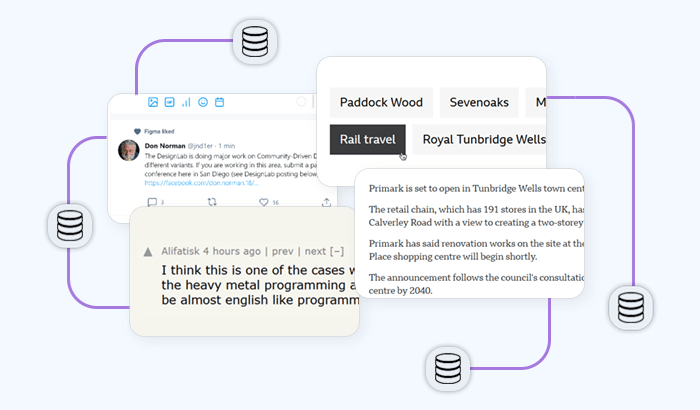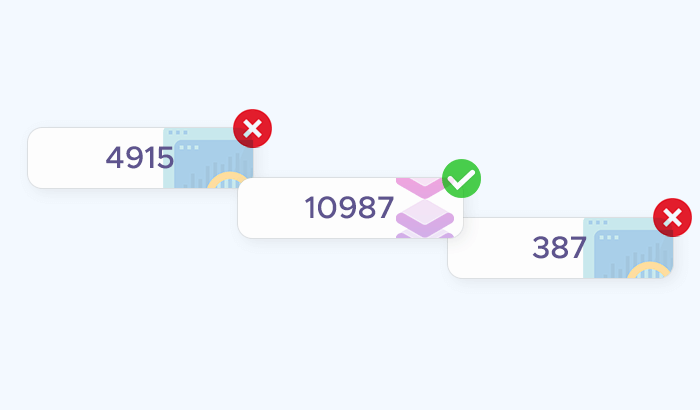

Ruby is often praised for its elegant syntax and developer-friendly ecosystem, making it a great choice not only for web development but also for tasks like web scraping. Whether you’re extracting product prices from e-commerce sites, monitoring news feeds, or gathering market research data, Ruby provides the tools you need to get the job done efficiently.
In this guide, we’ll walk through the basics of web scraping with Ruby – from setting up your environment and writing your first scraper to handling challenges like blocked requests.
Why Use Ruby for Web Scraping?
When developers think of web scraping, Python is often the first language that comes to mind. However, Ruby is just as capable – and in some cases, even more enjoyable – thanks to its simplicity and readability. If you already use Ruby for web development, adding scraping to your toolkit feels natural. Here are some of the reasons Ruby stands out for scraping projects:
Clean and Readable Syntax
Ruby’s syntax is concise and intuitive, which means less boilerplate code and more focus on logic. This makes it easier to write and maintain scrapers, especially if you’re new to the language.
Powerful Scraping Libraries
Ruby has several gems (libraries) that make scraping straightforward:
- Nokogiri – the go-to HTML and XML parser, perfect for extracting data from web pages.
- HTTParty – a simple way to send HTTP requests and handle responses.
- Mechanize – a higher-level library that can simulate a browser, manage cookies, and follow links.
Active and Supportive Community
Although smaller than Python’s, the Ruby community is highly active. Most popular gems are well-documented, and you’ll find plenty of tutorials, GitHub repositories, and Q&A threads to guide you through common challenges.
Easy Integration with Web Applications
Many Ruby developers already use Rails or Sinatra for web development. Scrapers written in Ruby can integrate directly with these applications, making it easy to build dashboards, APIs, or internal tools around your scraped data.
Flexibility for Automation
Ruby plays well with automation scripts. Beyond scraping, you can schedule scrapers with cron jobs, manage workflows, or integrate them with background job systems like Sidekiq.
Ruby vs Python
| Aspect | Ruby | Python |
|---|---|---|
| Syntax & Readability | Elegant and concise, easy for beginners to read and write. | Simple and widely taught, often considered the most beginner-friendly. |
| Scraping Libraries | Nokogiri, HTTParty, Mechanize — powerful but fewer in number. | BeautifulSoup, Requests, Scrapy, Selenium — very mature ecosystem. |
| Community Support | Smaller community, but gems are well-documented. | Large global community with extensive tutorials and guides. |
| Performance | Fast enough for small to medium scraping tasks. | Similar performance, but broader support for large-scale scraping frameworks. |
| Learning Curve | Gentle learning curve, especially for developers already using Rails. | Extremely beginner-friendly, widely taught in schools and courses. |
| Best Use Cases | Great for integrating scraping into Ruby web apps or automation scripts. | Ideal for large-scale scraping, data analysis, and machine learning integrations. |
Setting Up Your Environment
Before we dive into scraping, let’s prepare a simple Ruby environment with the right tools. You don’t need much – just Ruby installed and a few essential gems (libraries) that will make your life easier.
1. Install Ruby
First, make sure Ruby is installed on your machine. On most systems, you can check with:
ruby -v
If it’s not installed, you can use a version manager like RVM or rbenv:
# Using RVM
\curl -sSL https://get.rvm.io | bash -s stable
rvm install ruby
# Using rbenv
brew install rbenv
rbenv install 3.3.0 # Example version
2. Set Up a Project Directory
Create a new folder for your scraper:
mkdir ruby_scraper
cd ruby_scraper
It’s a good idea to manage dependencies with Bundler, which comes with Ruby:
bundle init
This will generate a Gemfile where you can add your scraping libraries.
3. Install Scraping Gems
Add the following gems to your Gemfile:
gem "httparty" # For HTTP requests
gem "nokogiri" # For parsing HTML
gem "mechanize" # For higher-level scraping (optional)
Then install them:
bundle install
4. Test the Setup with a Simple Script
Let’s make sure everything works by creating a file test_scraper.rb:
require "httparty"
require "nokogiri"
url = "https://example.com"
response = HTTParty.get(url)
parsed_page = Nokogiri::HTML(response.body)
puts parsed_page.css("h1").text # Print the first <h1> tag
Run it with:
ruby test_scraper.rb
If you see the page’s <h1> content printed out, congrats – your Ruby scraping environment is ready!
Building a Basic Ruby Scraper
With your environment ready, it’s time to build your first Ruby scraper. We’ll start simple: fetching a web page, parsing its HTML, and extracting some useful information.
1. Sending an HTTP Request
The HTTParty gem makes it easy to send requests and work with responses:
require "httparty"
url = "https://example.com"
response = HTTParty.get(url)
puts response.body # Prints the raw HTML of the page
This fetches the HTML source code of the target website.
2. Parsing HTML with Nokogiri
Raw HTML isn’t very useful on its own. To extract specific elements (like headlines or links), we can use Nokogiri:
require "httparty"
require "nokogiri"
url = "https://example.com"
response = HTTParty.get(url)
parsed_page = Nokogiri::HTML(response.body)
# Extract the main heading
heading = parsed_page.css("h1").text
puts "Page heading: #{heading}"
# Extract all links
links = parsed_page.css("a").map { |link| link["href"] }
puts "Links found: #{links.take(5)}"
Here, css selectors work just like in CSS: "h1" finds headings, "a" finds links, "p" finds paragraphs, etc.
3. Scraping Structured Data (Example: News Headlines)
Let’s scrape article headlines from a sample news site (replace the URL with a real one you want to test):
require "httparty"
require "nokogiri"
url = "https://news.ycombinator.com/"
response = HTTParty.get(url)
parsed_page = Nokogiri::HTML(response.body)
headlines = parsed_page.css(".titleline a").map(&:text)
puts "Top headlines:"
headlines.first(10).each_with_index do |title, i|
puts "#{i+1}. #{title}"
end
This script prints the first 10 story titles from Hacker News.
4. Using Mechanize for Browser-like Behavior
If you need to handle forms, cookies, or sessions, Mechanize can help:
require "mechanize"
agent = Mechanize.new
page = agent.get("https://example.com")
# Fill out a form (if present)
form = page.form_with(action: "/search")
form.q = "ruby scraping"
results = agent.submit(form)
puts results.search("h2").map(&:text)
Mechanize is useful when you need to simulate a user interacting with a site.
Handling Common Challenges in Scraping
While scraping with Ruby is straightforward, real-world projects rarely go smoothly from start to finish. Websites are designed for human visitors, not automated scrapers – and many have defenses in place to protect their data. Let’s explore the most common challenges you’ll face and how to overcome them.
Dynamic Content (JavaScript-Heavy Sites)
Many modern websites rely on JavaScript to render key content. If you only fetch the raw HTML, you may end up with empty placeholders instead of the data you need. Solutions:
- Look for an underlying API endpoint that provides JSON responses – this is often easier to scrape than parsing HTML.
- Use headless browsers like Selenium or Puppeteer (via Node.js integration) when working with highly dynamic pages. Ruby support for headless browsing exists but is more limited compared to Python or JavaScript.
Rate Limiting
Sending too many requests too quickly can overwhelm servers. As a result, many sites throttle traffic or temporarily block your IP if they detect suspicious activity. Solutions:
- Add delays between requests (e.g.,
sleep(rand(1..3))). - Use exponential backoff when errors occur.
- Cache results whenever possible to reduce unnecessary scraping.
IP Blocking
Frequent requests from the same IP address can quickly get flagged and blocked. This is one of the biggest obstacles for scaling scrapers. Solutions:
- Rotate your IPs using proxies.
- Residential and datacenter proxies allow you to distribute requests across a pool of IPs, lowering the risk of bans.
- Some proxy providers (like Infatica) also offer geo-targeting, letting you access localized content from specific countries.
CAPTCHAs and Bot Protection
Websites sometimes use CAPTCHAs or advanced detection techniques to prevent bots. Solutions:
- Rotate user-agents to mimic real browsers.
- Manage cookies and sessions to appear more human-like.
- Use proxy rotation to avoid suspicious traffic patterns.
- For strict cases, third-party CAPTCHA-solving services may be required.
Using Proxies with Ruby Scrapers
Proxies are one of the most effective tools for building scrapers that can handle scale, avoid bans, and access region-specific content. By routing requests through different IP addresses, proxies help you stay under the radar while gathering the data you need.
Why Proxies Matter in Scraping
- Avoid IP bans – Rotate IPs to prevent detection.
- Bypass geo-restrictions – Access content available only in certain countries.
- Improve reliability – Keep scrapers running even if some IPs are blocked.
While free proxies exist, they’re often slow, unreliable, and quickly blacklisted. For serious scraping projects, residential or datacenter proxies from providers like Infatica offer the stability and scale required for long-term success.
Using Proxies with Net::HTTP
Ruby’s built-in Net::HTTP supports proxies out of the box:
require "net/http"
require "uri"
uri = URI("https://httpbin.org/ip")
proxy_host = "123.45.67.89"
proxy_port = 8080
proxy_user = "username" # if authentication is required
proxy_pass = "password"
Net::HTTP::Proxy(proxy_host, proxy_port, proxy_user, proxy_pass).start(uri.host, uri.port, use_ssl: true) do |http|
response = http.get(uri.request_uri)
puts response.body
end
This sends a request through the specified proxy and prints the detected IP.
Using Proxies with HTTParty
With HTTParty, you can configure proxies like this:
require "httparty"
response = HTTParty.get(
"https://httpbin.org/ip",
http_proxyaddr: "123.45.67.89",
http_proxyport: 8080,
http_proxyuser: "username", # optional
http_proxypass: "password" # optional
)
puts response.body
Using Proxies with Mechanize
Mechanize also allows proxy configuration:
require "mechanize"
agent = Mechanize.new
agent.set_proxy("123.45.67.89", 8080, "username", "password")
page = agent.get("https://httpbin.org/ip")
puts page.body
Scaling with Proxy Rotation
For larger projects, a single proxy isn’t enough. Rotating through a pool of IPs helps avoid detection and throttling. This can be as simple as randomly picking a proxy from a list:
require "httparty"
proxies = [
{ addr: "123.45.67.89", port: 8080 },
{ addr: "98.76.54.32", port: 8000 }
]
proxy = proxies.sample
response = HTTParty.get(
"https://httpbin.org/ip",
http_proxyaddr: proxy[:addr],
http_proxyport: proxy[:port]
)
puts response.body
For production use, rotating proxy services handle this automatically – saving you time and effort.













